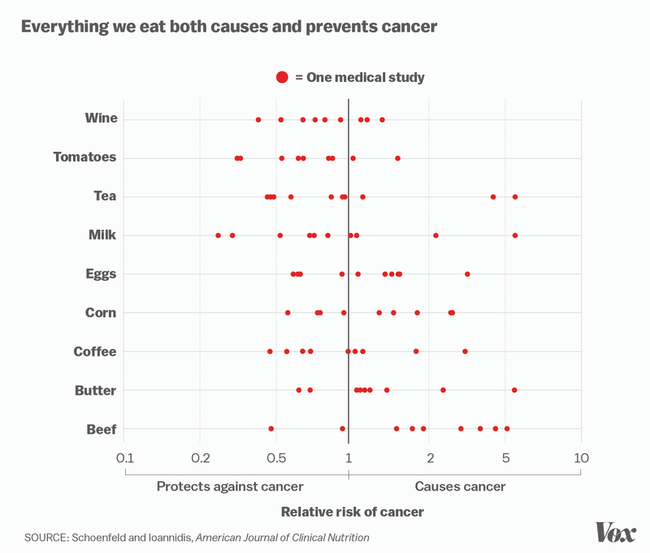A rule of thumb describes an approach based on intuition, in contrast to one based on rationality and calculation. I think its fair to say that science is all about rational, calculating, data-driven approaches, where intuition is considered irrational and unreliable. The scientific method is, among other aspects, about eliminating the effect of various biases, like the availability bias (the first thing that comes to mind is seen much more favourable than other options; Daniel Kahneman describes many of these in “Thinking, Fast and Slow”). In this article I want to provide examples where rules of thumb are a better alternative to scientific research for making personal decisions.
Consider food. The 20th century has seen many trends come and go, arguing for some aspect in one decade, arguing against the same aspect in the next. Fat is good, fat is bad; carbs are good, carbs are bad. When it comes to the cancerogenic or cancer preventing effects of food, there are many medical studies involved, but have those gotten us any further? Consider this graph from a vox.com article about news about medical studies:
Note the headline on that graph: “Everything we eat both causes and prevents cancer”. I feel like that’s still the wrong way to think about it. Consider this instead: Food doesn’t cause or prevent cancer. Human bodies are not machines that all have the same requirements, they are more complicated, flexible and unique. As long as given the right nutrients, your body will function regardless of the specific food you eat. As the author concludes: “As we turn away from the magic pills and miracle treatments, I think we’ll focus more on the things that actually matter to health — like education, equality, the environment.”
Education, equality, the environment, these are all interesting areas, but then food is certainly important to us as well, and surely has influence on our health. But can medical studies really help us decide what food to eat, when they contradict each other so much? In this case a rule of thumb is likely our best bet. To answer the question of “What should I eat (to not get cancer)?”, the rule of thumb given by Michael Pollen in his book “In Defense of Food” could work pretty well:
Eat food. Not too much. Mostly plants.
Note that this doesn’t require peer-reviewed studies published in journals to understand. This rule of thumb itself seems pretty intuitive to me. But more importantly, it’s simple, easy to remember, and easy to apply. It’s not precise, it leaves plenty of ambiguity, and that’s fine. It can help make quick decisions about what and how much to eat, without getting you into decision paralysis, where you can’t decide among too many options or contradicting recommendations. And if this rule of thumb doesn’t work for you personally, then you can look for another one.
If the idea of using rules of thumb as outlined above is intriguing to you, I can highly recommend the book “Risk Savvy: How to Make Good Decisions” by Gerd Gigerenzer (also available in German as “Risiko: Wie man die richtigen Entscheidungen trifft”). The author covers various other rules of thumb (for example, for picking food from a restaurant menu), but also discusses risk and decision making from other perspectives. Its among a few books that influenced my thinking quite a lot lately.
PS: Thank you Lars, Tomasz and Enes for reviewing drafts of this post and providing valuable feedback.
